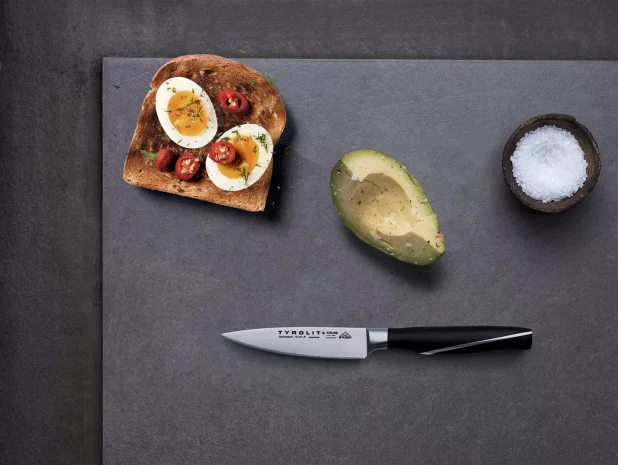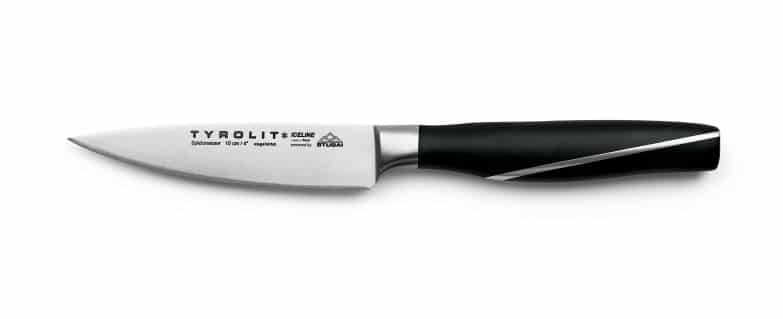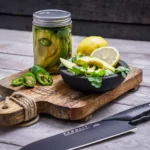The Paring Knife

These facts should help you again in your purchase decision
Most of us are probably familiar with chef’s knives, bread knives, and cheese knives, but what is the purpose of a larding knife? In the past, this small, handy kitchen knife was used for larding lean meat. Hence the name larding knife. Nowadays, it has become a small, sharp multitool in the kitchen that is very popular among both professional chefs and hobby cooks.
Characteristics of a paring knife

The paring knife, with its narrow, pointed blade, is highly versatile. Typically, the blade ranges from 8 to 15 cm in length and comes in either a smooth or serrated version. In the past, it was used for larding meat. The point would be inserted into lean meat, and then the opening filled with bacon, herbs, and spices to enhance the meat’s flavor.
The smooth-edged variant is well-suited for peeling and slicing soft foods like sausages, mushrooms, onions, or herbs. It’s also ideal for filleting small fish and removing bones, thanks to its blade shape. The serrated paring knife works well for cutting firmer foods such as hard sausages and also for peeling fruits and vegetables. Depending on the size of the knife’s blade, it can be effectively used for pitting fruits, delicate tasks such as trimming vegetables, or simply for slicing fruits or vegetables.
Small, but Mighty!
The TYROLIT LIFE paring knife has a blade length of 10 cm, is forged from a single piece of stainless steel (steel material 1.4116), and is ice-hardened multiple times (56 HRC). The Iceline series from TYROLIT LIFE features the finely ground blade. The knife feels very comfortable in the hand, enabling the use of versatile cutting techniques
Either you hold the knife and food in your hand, peeling it almost as if it’s floating, or you place the food on a wooden board and cut it with a backward, top-down motion – for safety reasons, we recommend the second option. The small paring knife is extremely sharp and agile, requiring practice to handle. Due to the shape of the blade, the rocking cut technique can also be applied.
Recommendations
It is advisable to immediately purchase the appropriate cutting surface along with a knife or knife set. A wooden cutting board is optimal, since the tannic acids contained within the wood act as an antibacterial agent, thus speeding up the breakdown of germs. With each cut into the wooden board, new antibacterial substances are released, making the board effectively self-cleaning, and undoubtedly more hygienic than some might assume
It can also be cleaned easily and in an environmentally friendly manner: simply rinse with water and let it dry. Please do not cut on granite, ceramic, or glass surfaces, as this will damage both the blade and the surface. Like all knives, the paring knife should not be washed in the dishwasher; instead, it’s best cleaned with a damp cloth after use, then dried, and stored in a way that protects the blade, such as in a knife block.


